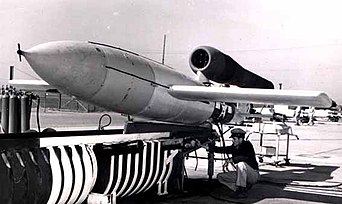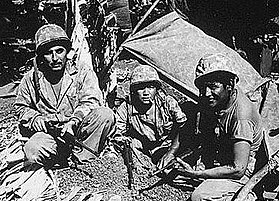The U.S. state of Utah played a significant role in World War II, with its military bases, industrial capacity, and strategic location making it a key contributor to the Allied effort.
Utah was home to several military bases during World War II, including Hill Air Force Base, which served as a maintenance and repair depot for aircraft and was critical in maintaining the war effort in the Pacific. Additionally, the Wendover Army Air Field played a crucial role in training bomber crews, including those who would later drop atomic bombs on Japan.
Utah's industrial capacity also played a critical role in the war effort. The state's abundant natural resources, such as coal and iron, were used to manufacture war materials, including tanks, aircraft, and munitions. The Geneva Steel plant in Utah County was a key contributor to the war effort, producing steel used in ships, tanks, and planes.
Utah's strategic location also made it an important player in World War II. The state served as a hub for transporting troops and materials to the Pacific. Additionally, the state was home to the Bushnell Army Hospital, which served as a major medical facility for wounded soldiers returning from the Pacific.
Utah's citizens also played an important role in the war effort, with many volunteering for military service and participating in wartime activities such as scrap metal drives and rationing programs.
Military bases
Utah was home to several military bases during World War II, including Hill Air Force Base, which played a crucial role in the war effort. Hill Air Force Base was established in 1939 as a maintenance and repair depot for aircraft, and during the war, it became one of the largest military installations in the country. The base employed over 22,000 civilians and military personnel, making it a major employer in the state.

Hill Air Force Base served as a key repair and overhaul center for aircraft, including bombers and fighter planes, and played an essential role in maintaining the war effort in the Pacific.. The base's technicians and engineers worked tirelessly to keep aircraft flying, and their efforts helped ensure the success of Allied air campaigns in the Pacific.
In addition to Hill Air Force Base, the Wendover Army Air Field was also located in Utah and played a crucial role in the war effort. The airfield was used as a training facility for bomber crews, including those who would later drop atomic bombs on Japan. The airfield's remote location made it an ideal site for training, and its dry climate and flat terrain were ideal for bomber operations.
The military bases in Utah also served as important training grounds for soldiers preparing to fight in the war. Camp Kearns, located just outside Salt Lake City, was a major training center for soldiers, and thousands of troops were trained there before being sent overseas. The base was also home to a prisoner of war camp, which held Italian and German prisoners captured during the war.
Industrial capacity

Utah's abundant natural resources and existing infrastructure made it a significant contributor to the war effort. The state's coal mines and iron ore deposits were utilized to produce steel for ships, tanks, and aircraft, while its manufacturing facilities produced a variety of war materials.
One of the most significant industrial contributors in Utah during the war was the Geneva Steel plant, located in Utah County. The plant was constructed in 1942 and became a vital part of the war effort, producing steel used in ships, tanks, and planes. Geneva Steel employed over 6,500 workers during the war, many of whom were women who had previously worked in domestic roles but were now taking on manufacturing jobs.
Other industries in Utah also played important roles in the war effort. The Tooele Army Depot, located west of Salt Lake City, stored and maintained a wide variety of ammunition, including bombs, grenades, and rockets. The depot was responsible for supplying ammunition to troops fighting in Europe and the Pacific.
Strategic location
Utah's strategic location made it an important player in World War II. The state was inland far enough to be safe from an attack from Japan, and it was equidistant from Seattle, San Francisco, and Los Angeles, three major coastal port cities. It was also connected to other parts of the country via roads and transcontinental railways. The United States government also recognized the strategic location of Utah because they stored 15 percent of the unused munitions from World War I in the Ogden Arsenal.

Utah was also home to the Bushnell Army Hospital, which served as a major medical facility for wounded soldiers returning from the Pacific. The hospital was located in Brigham City, and its staff treated over 20,000 patients during the war. The hospital's strategic location allowed it to provide critical medical care to injured soldiers quickly and efficiently.
In addition to its transportation and medical capabilities, Utah's location also made it an ideal site for training and testing military equipment. The state's vast expanses of land and relatively low population density made it an excellent location for testing new weapons systems and training troops. The Dugway Proving Ground, located in the western part of the state, was used to test chemical and biological weapons, as well as other military technologies.
Utah Minute Women
The women of Utah during the second World War played a big part in sustaining the troops overseas. The US Government sent out a declaration to all of the women in the country to participate in the salvage committees headed by the US Salvage Program. The Salvage Program was an organization that encouraged US citizens (especially housewives) to save the waste materials in their houses such as animal fats and donate it to the war cause. This program allowed for common waste products such as fats, metal, and cloth to be recycled into raw materials needed for combat. Many "Minute Women" in the Salvage Program also donated silk, nylon, tin, rags, bronze, copper, and other materials to the organization.
The women of Utah were among the first in all of the country to answer the call to aid and set up women's organizations to help the Salvage Program and thousands of women served on every block. They also placed fifth in the nation among all other women throughout the country in terms of fat/glycerin collection to assist the military in creating explosives.
Utah Minute Women also participated in other war programs such as: Collection of Milk and Beverage Bottles, Fur Collection, Rubber Footwear Exchange, Staggering Shopping Hours, Scrap Metal, Bronze and Copper, Meat Rationing, Red Cross Nutrition Courses, Share the Ride Campaign, Rationing Volunteers, Surveys, Shut Up Campaign, and Bond Drives.
Working people of color

Although the work experiences of the people of color in Utah at the time were poorer than that of white men and women, they did enjoy unprecedented employment opportunities. Thousands of African Americans moved to Utah in search of work and they participated in the war effort while working as porters, waiters, on the railroad and at the smelters, and in janitorial positions. Mexican nationals also temporarily immigrated to the US to help out on the farms and ranches and enjoyed higher-paying war production jobs. Native Americans too answered the call to work, not only as Code Talkers, but also in Utah military installations and many tribes, such as the San Felipe and Pueblo Indians, assisted at the Naval Supply Depot in Clearfield.
Aside from these groups of people of color, the more vulnerable groups in the US such as the deaf, the blind, and people with Dwarfism also provided indispensable labor to help win the war.
University of Utah
In response to the war, the Deans' Council decided to create a school organization called "The Committee on Civilian Defense and Military Affairs". This committee was assembled in order to provide protection, information, and inspiration to the students and faculty of the University of Utah and to help coordinate and conduct military affairs on campus. The committee also published the "University Defense Communique", a pamphlet with information and communications the Deans' Council used to spread important reports and updates.
On March 20, 1942, the Deans' Council voted unanimously to accommodate US military personnel in the Union Building should the need arise. The students of the University were asked to give an opinion on this situation and it turned out that the student body was also more than willing to give up this building for the good of the nation. As the request to welcome the military into their University came, the Utes cheerfully allowed them to occupy and work in the Union Building on campus.
Throughout the period of World War 2, there were 19 members of the University's faculty that were in the armed forces. And of the 6,735 former students and graduates that went into the armed services during the war, 314 did not make it back.
References
- ^ "Utah and World War II". issuu. Retrieved 2023-04-10.
- ^ "World War II in Utah". History to Go. Retrieved 2023-04-10.
- ^ "Bushnell and Brigham City · Bushnell Days · USU Digital Exhibits". exhibits.usu.edu. Retrieved 2023-04-10.
- ARRINGTON, LEONARD J.; ALEXANDER, THOMAS G. (1963). "They Kept 'Em Rolling: THE TOOELE ARMY DEPOT, 1942-1962". Utah Historical Quarterly. 31 (1): 3–25. ISSN 0042-143X.
- POWELL, ALLAN KENT (2005-04-01). "Utah and World War II". Utah Historical Quarterly. 73 (2): 108–131. doi:10.2307/45062887. ISSN 0042-143X.
- Sessions, Gene A. (1998-02-01). "Review: Utah, the Right Place: The Official Centennial History, by Thomas G. Alexander". Pacific Historical Review. 67 (1): 118–119. doi:10.2307/3642068. ISSN 0030-8684.
- Blakesley, Katie (2003). "Save 'em, Wash 'em, Clean 'em, Squash 'em': The Story of the Salt Lake City Minute Women". Utah Historical Quarterly. 71 (1): 36–51.
- ^ Utah Minute Women: World War II, 1942-1945. U.S. War Production Board. p. 14.
- Utah Minute Women: World War II, 1942-1945. U.S. War Production Board. p. 22.
- Utah Minute Women: World War II, 1942-1945. U.S. War Production Board. pp. 31–32.
- ^ Noble, Antonette (1991). Utah’s Defense Industries and Workers in World War II. Utah Historical Quarterly. pp. 371–374.
- ^ Cowles, LeRoy (1949). University of Utah and World War II. Salt Lake City, Utah: Deseret News Press. pp. 34–83.